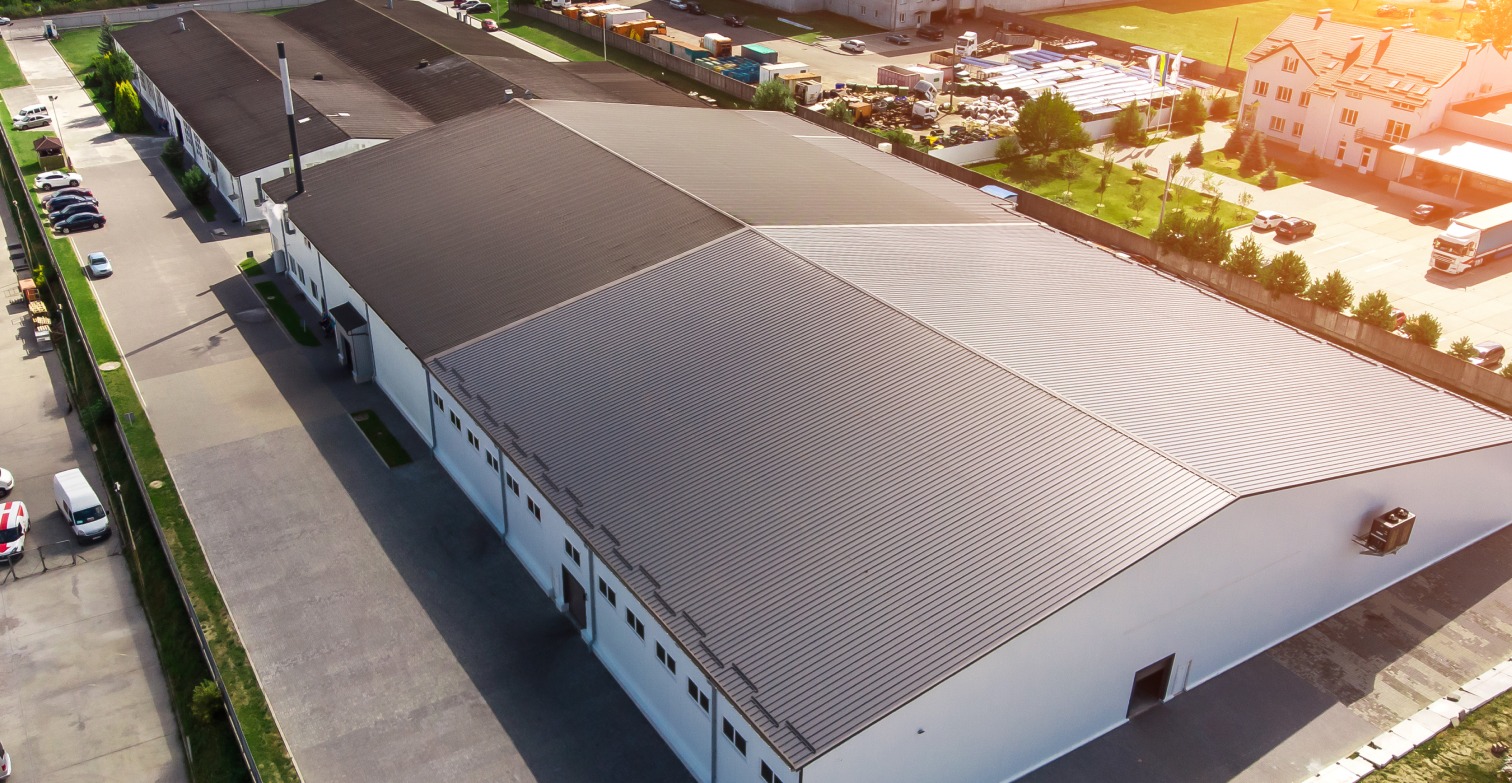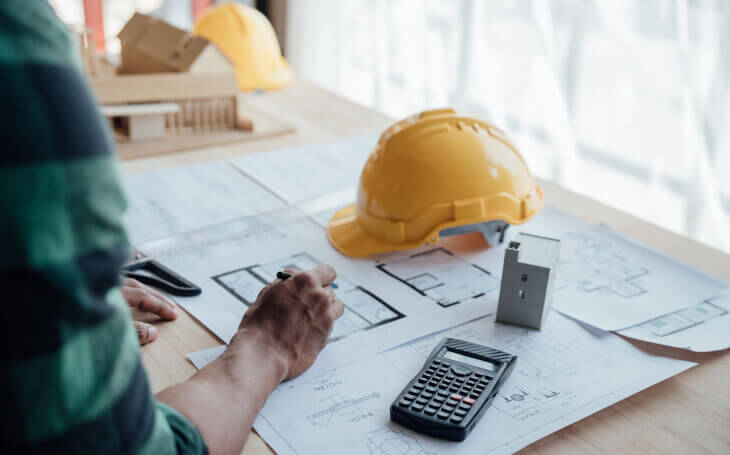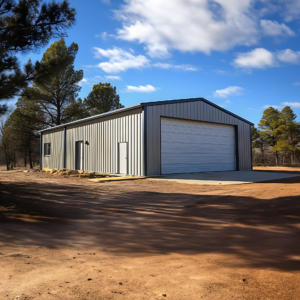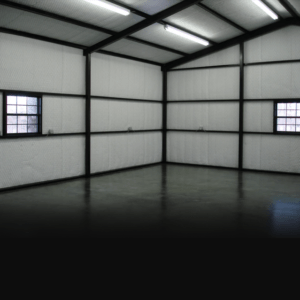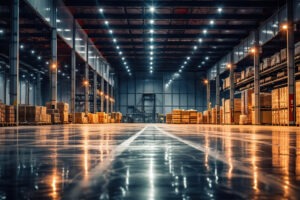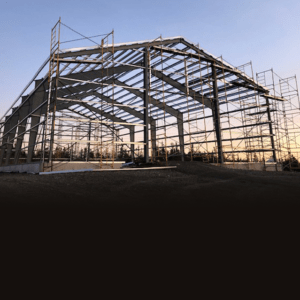Building a steel structure in Canada requires careful consideration of numerous factors that ensure success. From purpose and function of the building and site location, to the selection of suitable materials and compliance with local regulations, every aspect must be carefully weighed. As experts in planning and erecting steel buildings, we have assembled a series of articles and resources to help you research and plan your steel building at each stage.
Site Selection
Choosing the right location for your steel building involves the review and consideration of many key factors including accessibility, zoning and local by-laws, environmental and infrastructure. Each of these factors has a large impact on the functionality and design of your new steel building:
Site Accessibility:
Ensuring that the site has proper road access and proximity to transportation routes is among the highest site selection criteria.
Having site accessibility is important when planning and erecting a steel building for several reasons. It ensures that construction materials and equipment can be easily transported to the site, allowing for a smooth and efficient construction process. It enables the delivery of necessary utilities such as electricity, water, and sewage systems, which are essential for the functioning of the building. And it plays a crucial role in ensuring the safety of workers during the construction phase, allowing for the movement of heavy machinery and vehicles, reducing the risk of accidents and injuries. It also facilitates emergency access in case of any unforeseen circumstances.
Considering site accessibility is important for the long-term maintenance and operation of the steel building as well. It allows for easy access to the building for repairs, inspections, and regular maintenance activities. This helps in preserving the structural integrity of the building and prolonging its lifespan.
All the following considerations significantly impact the construction process, supply chain logistics, and overall functionality of the building. Let’s delve into the reasons why these considerations are paramount.
Efficient Construction Process:
Building a steel structure requires the transportation of various materials, equipment, and machinery. Having proper road access allows for smooth movement of heavy machinery and large-scale deliveries to the construction site. This ensures that the construction process remains efficient and minimizes any potential delays.
Supply Chain Logistics:
Proximity to transportation routes plays a vital role in the supply chain logistics of your steel building project. It allows for easy transportation of raw materials, such as steel beams, roofing panels, and insulation, from suppliers to the construction site. With readily available transportation routes, you can ensure a steady flow of materials, reducing downtime and keeping the project on schedule.
Accessibility for Occupants:
Aside from the construction phase, accessibility for occupants of the steel building is equally important. A well-connected location with proper road access allows employees, clients, and business partners to reach the facility conveniently. This accessibility not only benefits daily operations but also enhances customer satisfaction and business growth.
Evaluating the road infrastructure surrounding the potential site is another key accessibility factor to consider. Look for well-maintained roads that can accommodate heavy vehicles and ensure smooth transportation to and from the construction site. Conduct a thorough assessment of the existing roads near the selected site in local region of your site to determine the suitability for heavy construction equipment transportation.
Zoning:
Check local zoning regulations to determine if the site is suitable for the intended use.
When considering the construction of a steel building in Canada, it is crucial to thoroughly plan and understand the local zoning regulations to ensure the site is suitable for the intended use. These regulations outline the permitted land uses, building restrictions, setbacks, and other requirements specific to your area. By familiarizing yourself with these regulations, you can ensure that your steel building project aligns with the local guidelines and avoid potential legal issues down the line.
Site Suitability Assessment:
Once you have verified the zoning regulations, it is crucial to assess the site’s suitability for your intended use. Consider the following factors during this evaluation:
Topography: Evaluate the terrain to determine if any grading or leveling work is required
Environmental Considerations: Assess any environmental concerns such as flood zones, soil conditions, and potential impact on nearby ecosystems.
Utilities:
Assess the availability of utilities such as water, electricity, and sewage systems.
One primary consideration for a steel building is the availability of utilities such as water, electricity, and sewage systems. These utilities play a vital role in the functionality and sustainability of any building, and their availability must be carefully evaluated before proceeding with the construction process. The following are the key factors to consider when reviewing utilities:
Water
- Determine the proximity of a reliable water source to the building site.
- Assess the water quality and suitability for various uses within the steel building.
- Evaluate the water pressure and flow rate to ensure adequate supply for daily activities.
Electricity
- Check if there is an existing electrical grid connection available nearby.
- Assess the capacity of the electrical infrastructure to meet the requirements of the steel building.
- Consider the availability of alternative energy sources such as solar or wind power.
Sewage Systems
- Evaluate the availability and capacity of sewage systems for waste disposal.
- Determine if there are any restrictions or regulations regarding waste management in the area.
- Consider the feasibility of implementing eco-friendly sewage treatment systems.
Environmental Considerations:
Evaluate any environmental restrictions or considerations specific to the location. Certain environmental factors can impact the longevity and increase maintenance costs as well as cause damage to the building foundation. Other factors can impact the cost of heating, and utilities for a steel building. Researching these factors can reduce the possibility of damage, business disruption and day to day operating costs of your steel building. Consider the following when selecting your building site:
Climate and Weather
How much snow and rain will the site and surrounding access points receive annually?
Is the site in a remote area with a harsh climate?
Climate, temperature, snow and rainfall, harsh seasonal changes can all affect the stability and longevity and accessibility of you steel building. Review local environmental resources such as flood data, tide tables and any environmental risks that may interrupt your build, or day to day operations.
Environmental impact
Will the location of the steel building be close to a river that is at risk of flood?
Is there a high or low water table?
Groundwater is influenced by various factors such as precipitation, irrigation, ground cover, land use, and tides. The water table, which refers to the level at which groundwater is found, can vary with seasonal and yearly changes due to climatic variations and the amount of water extracted from underground sources. Encyclopedia Britannica advises that the water table can be located several inches or feet below the ground surface, following the land’s topography. However, for some individuals, the water table may be higher, even reaching above the soil surface.
The water table, along with local soil conditions and drainage, can have an impact on buildings and their foundations. If the soil has good drainage and the water table is relatively low, it may not pose a problem. Conversely, if the soil is dense and absorbent while the water table is high, the area surrounding a building may become saturated and expand. This can exert significant pressure against the foundation.
By carefully examining these aspects, you can identify any potential challenges or limitations, minimize setbacks and ensure a smooth construction process.

